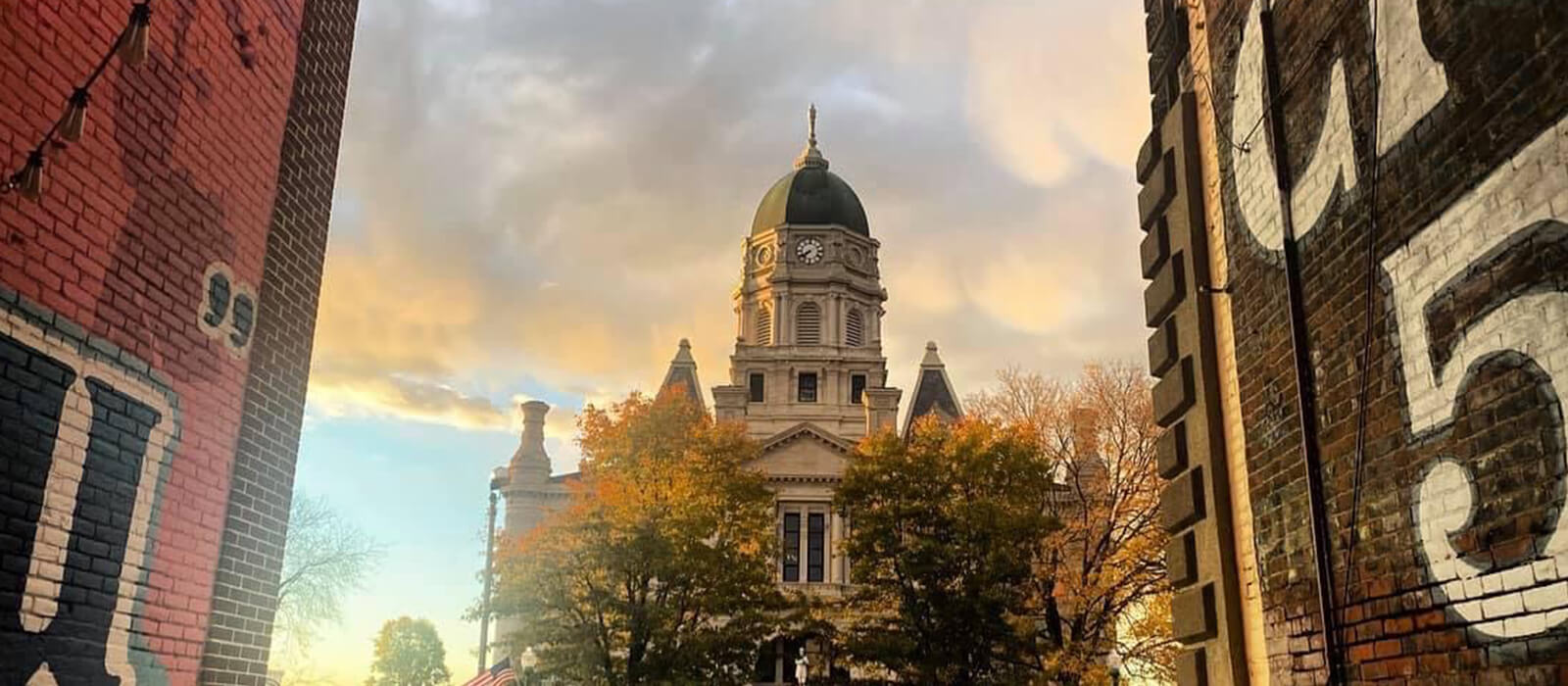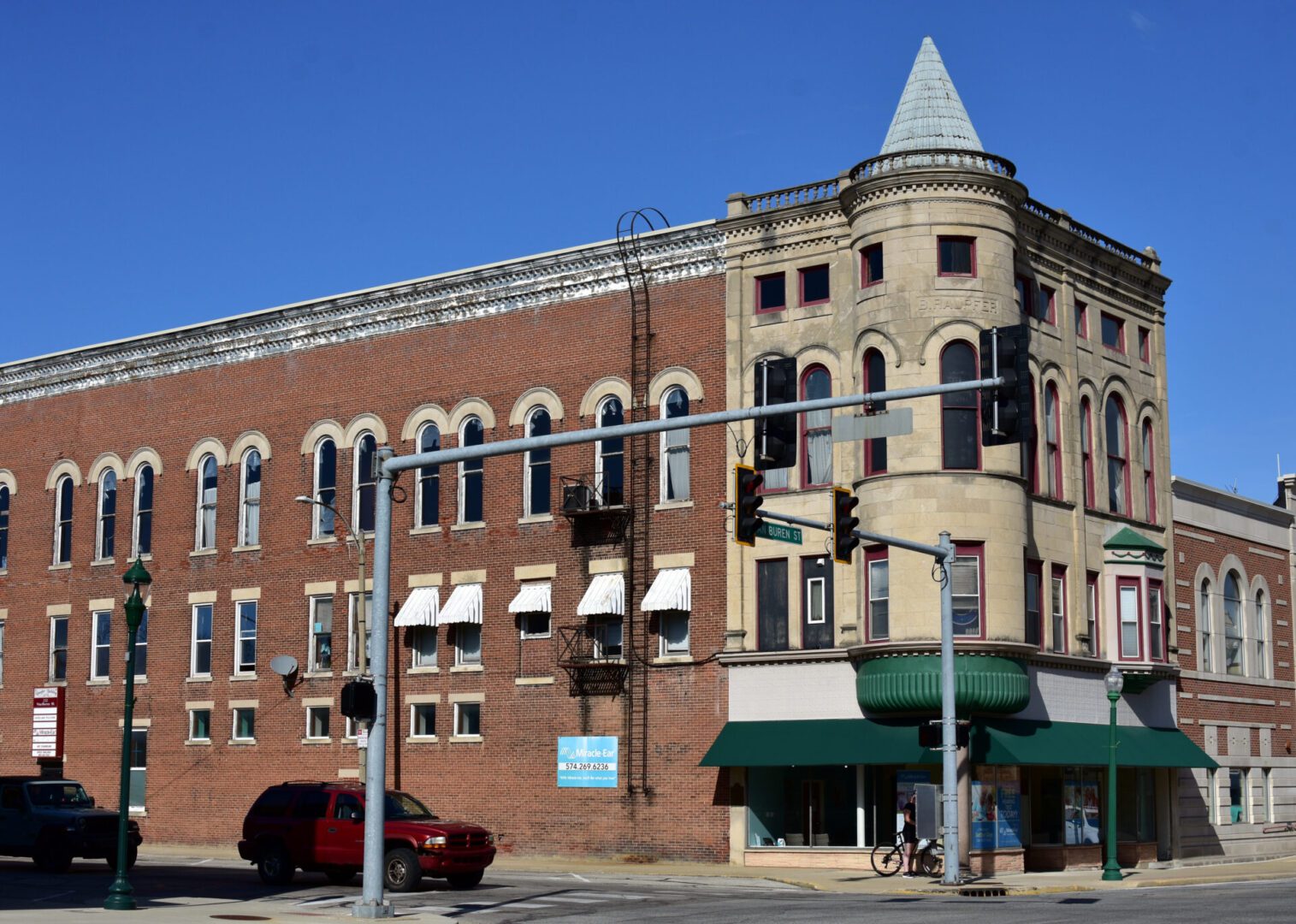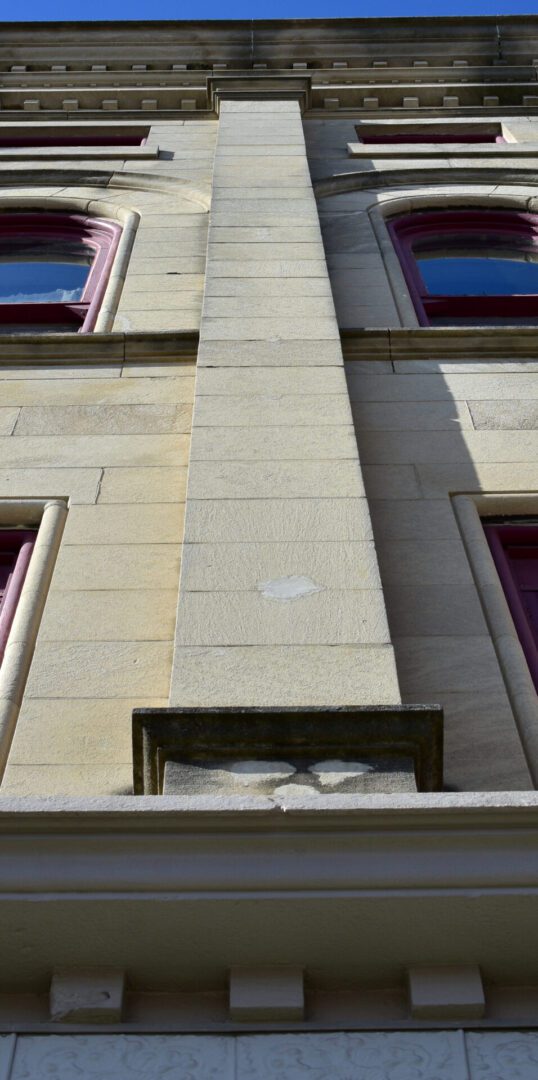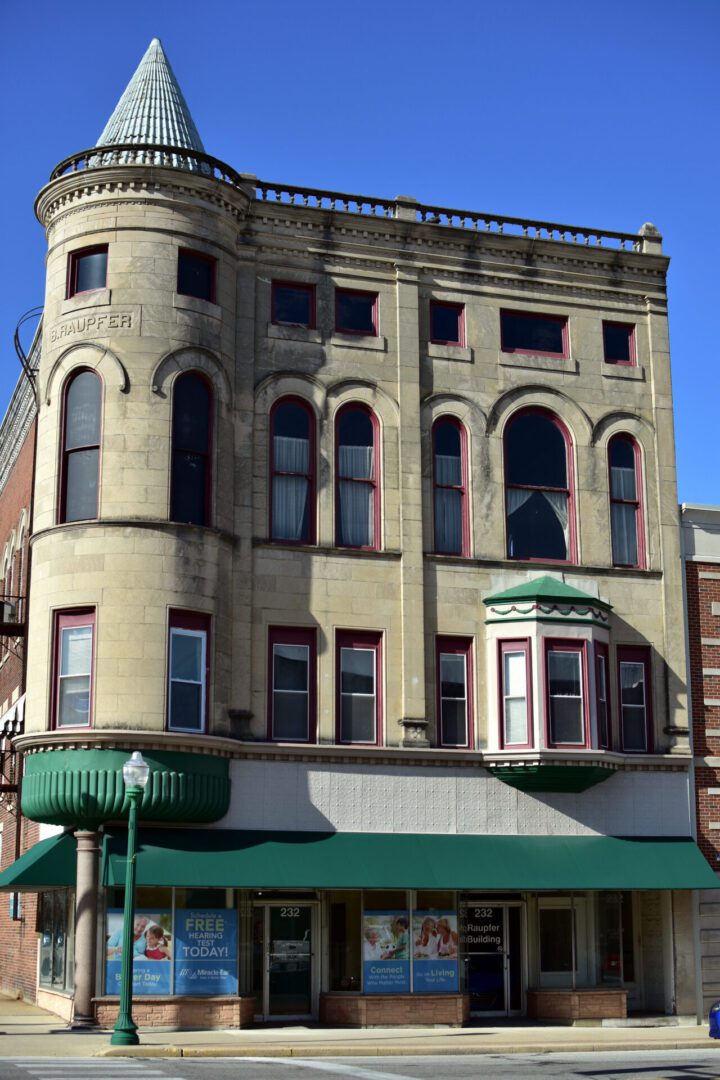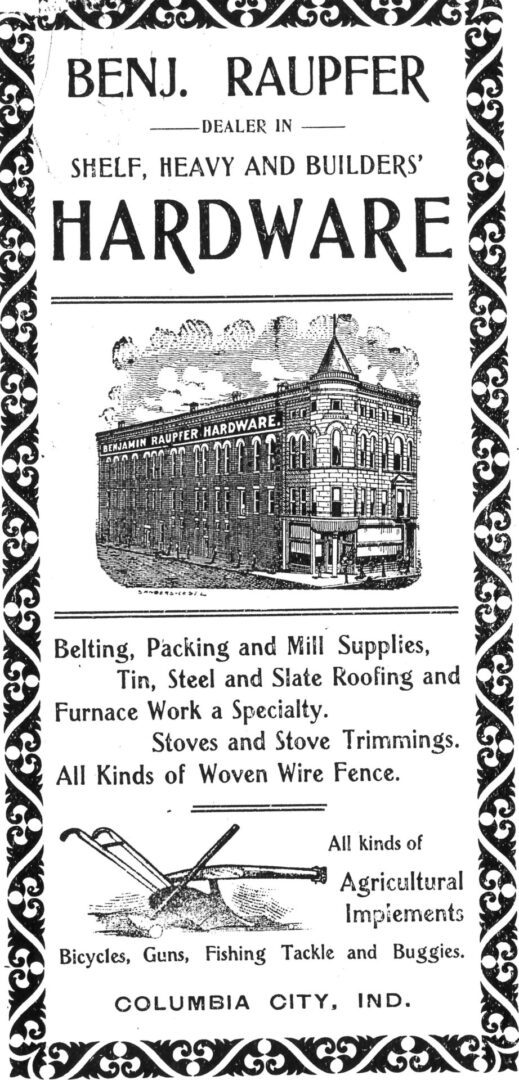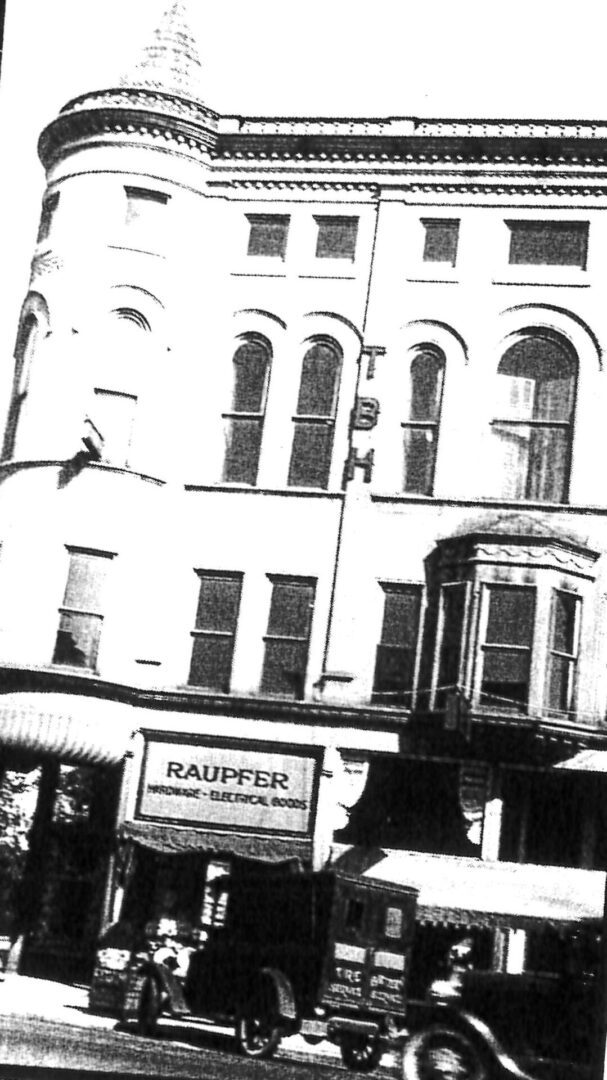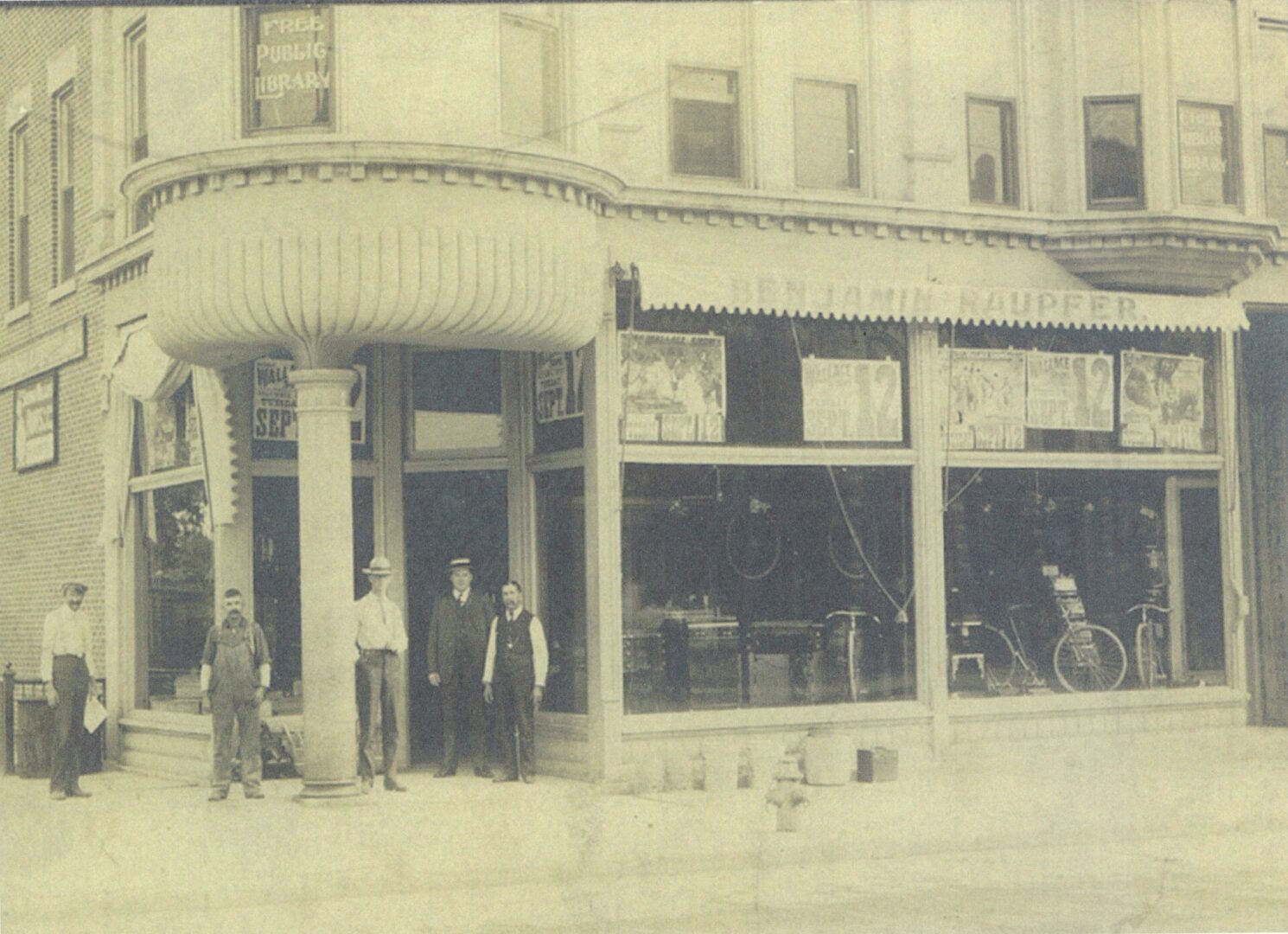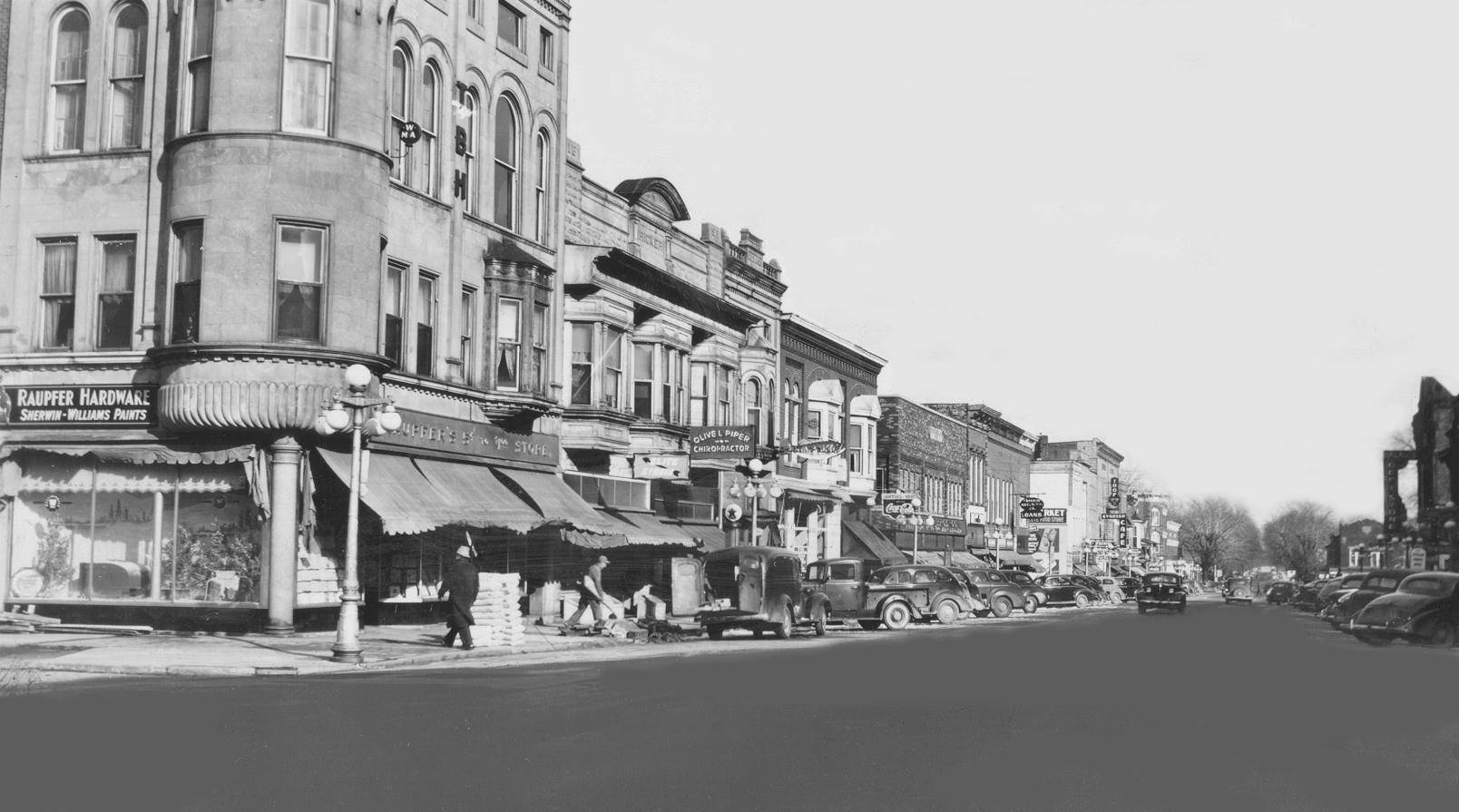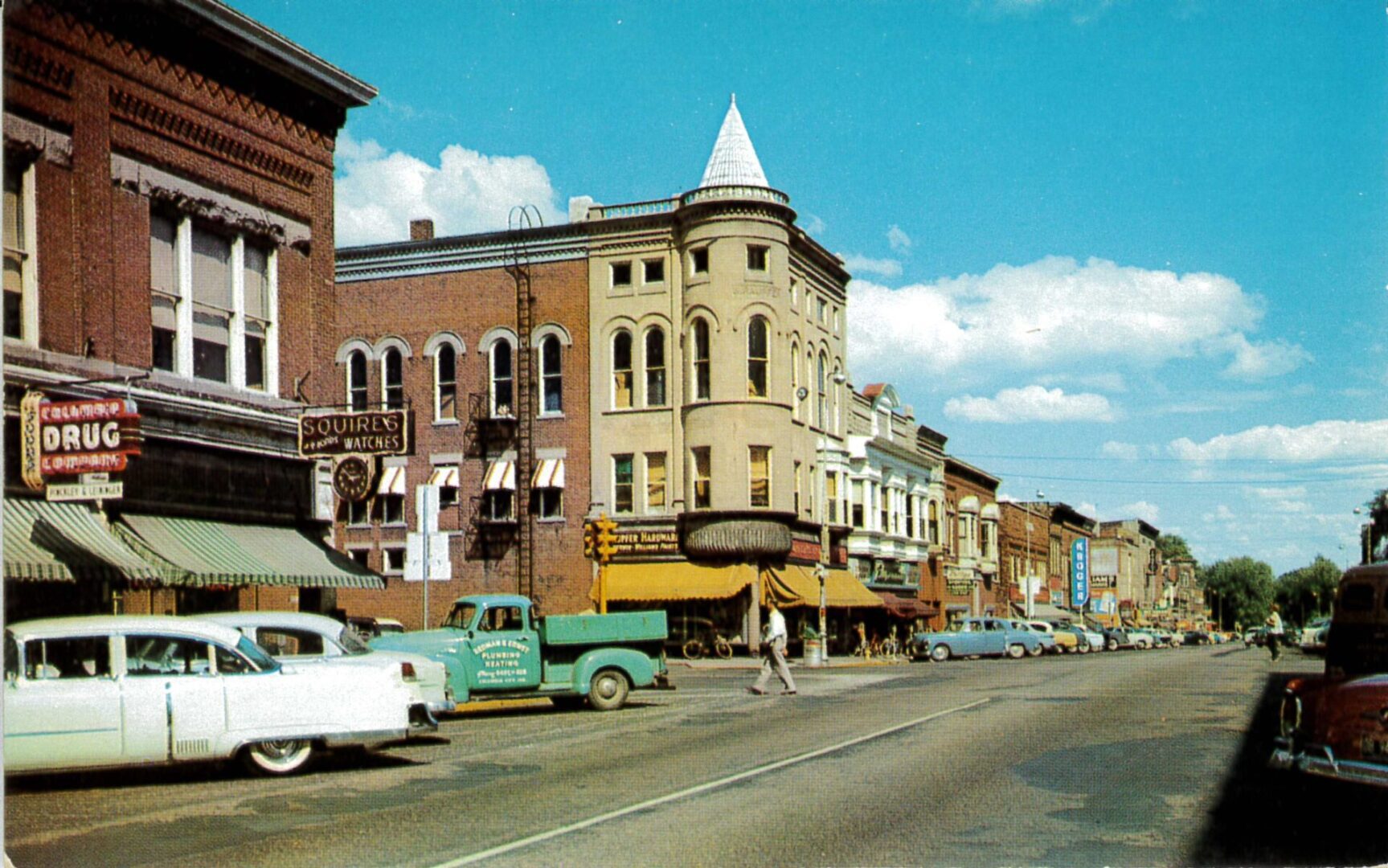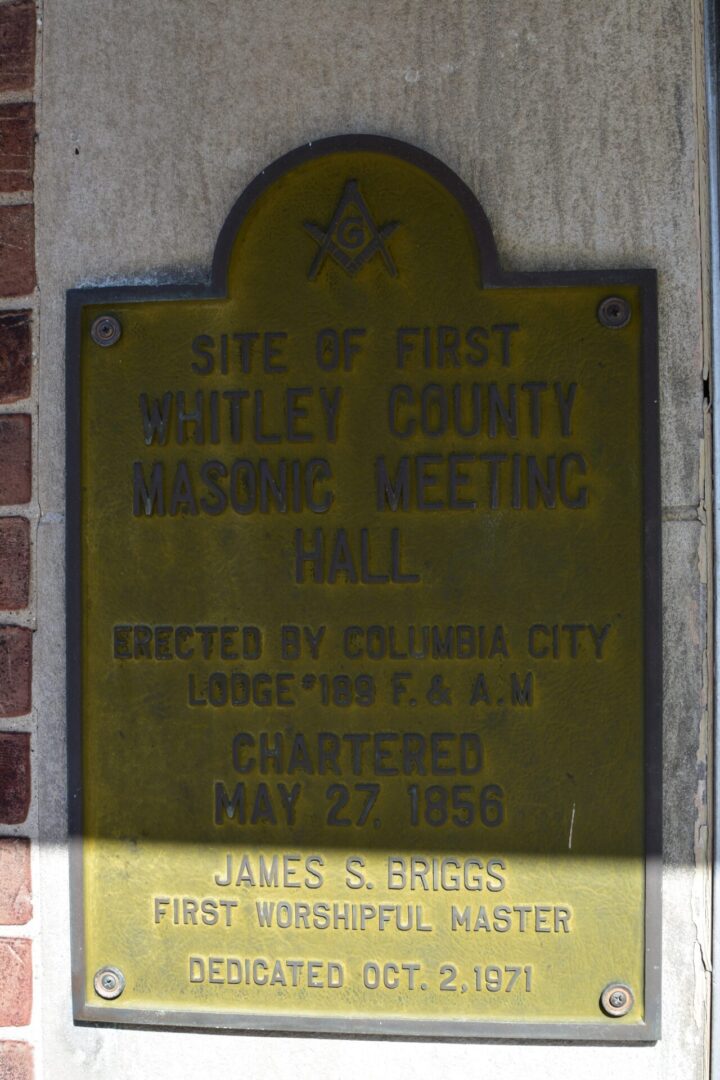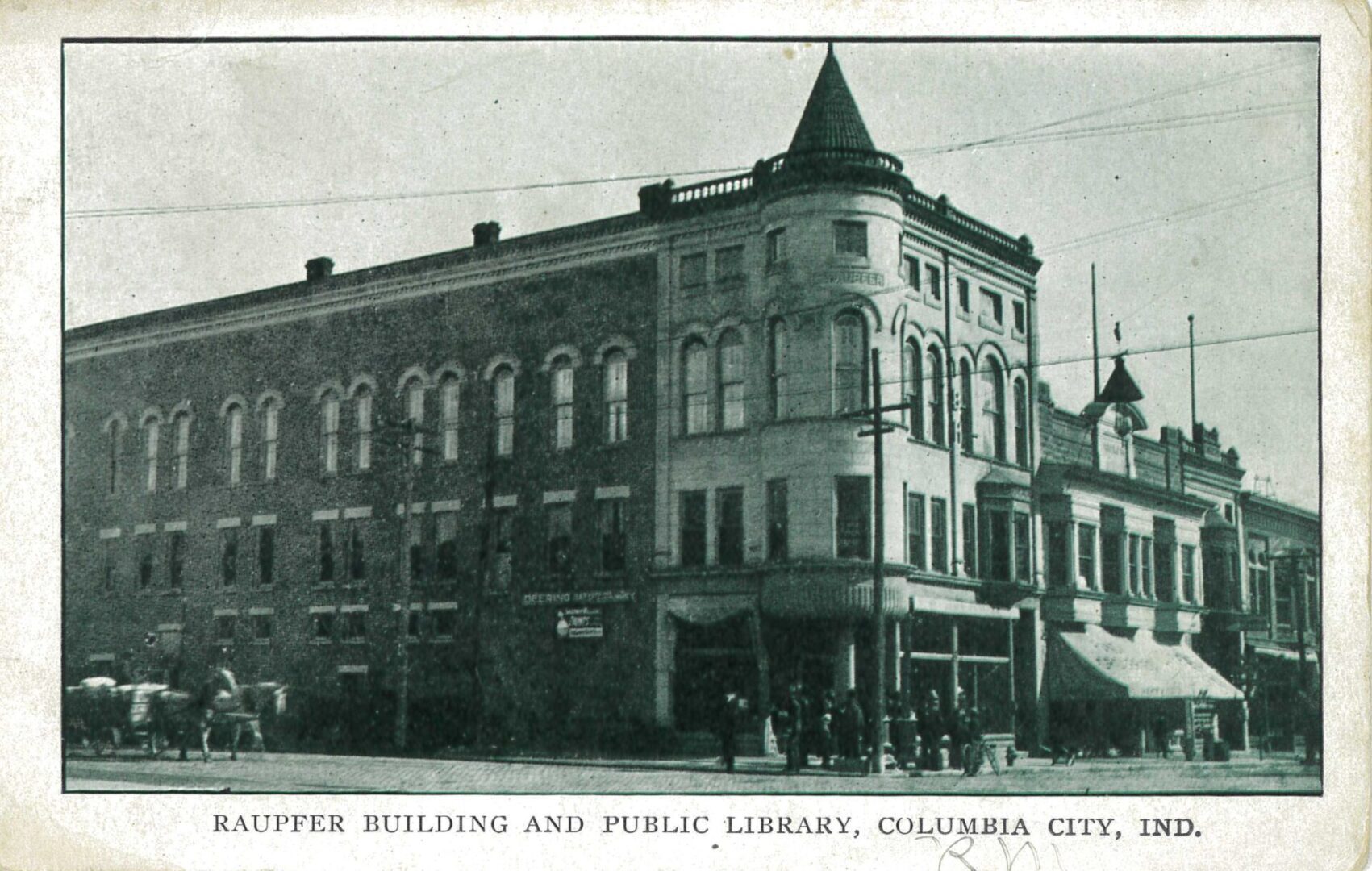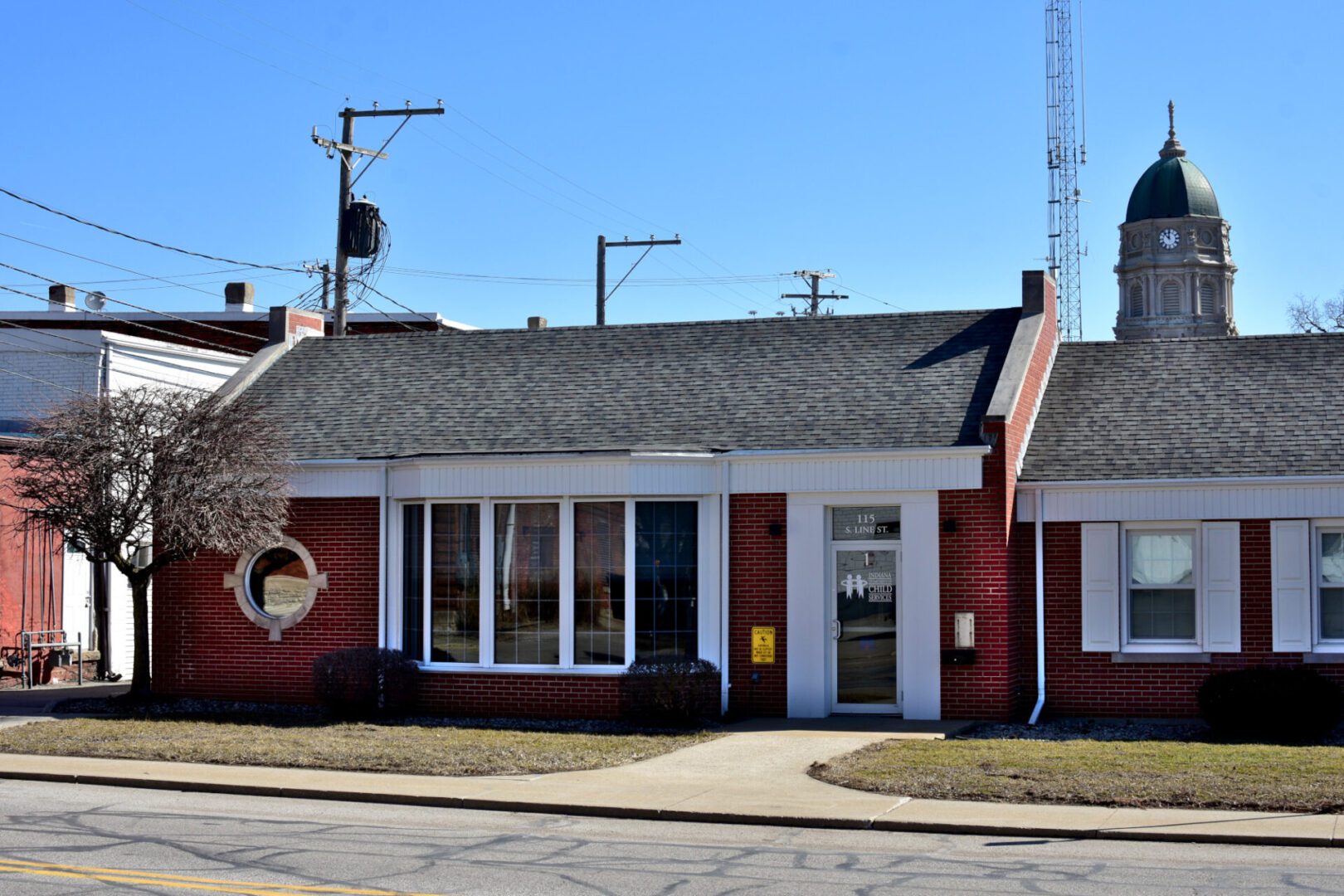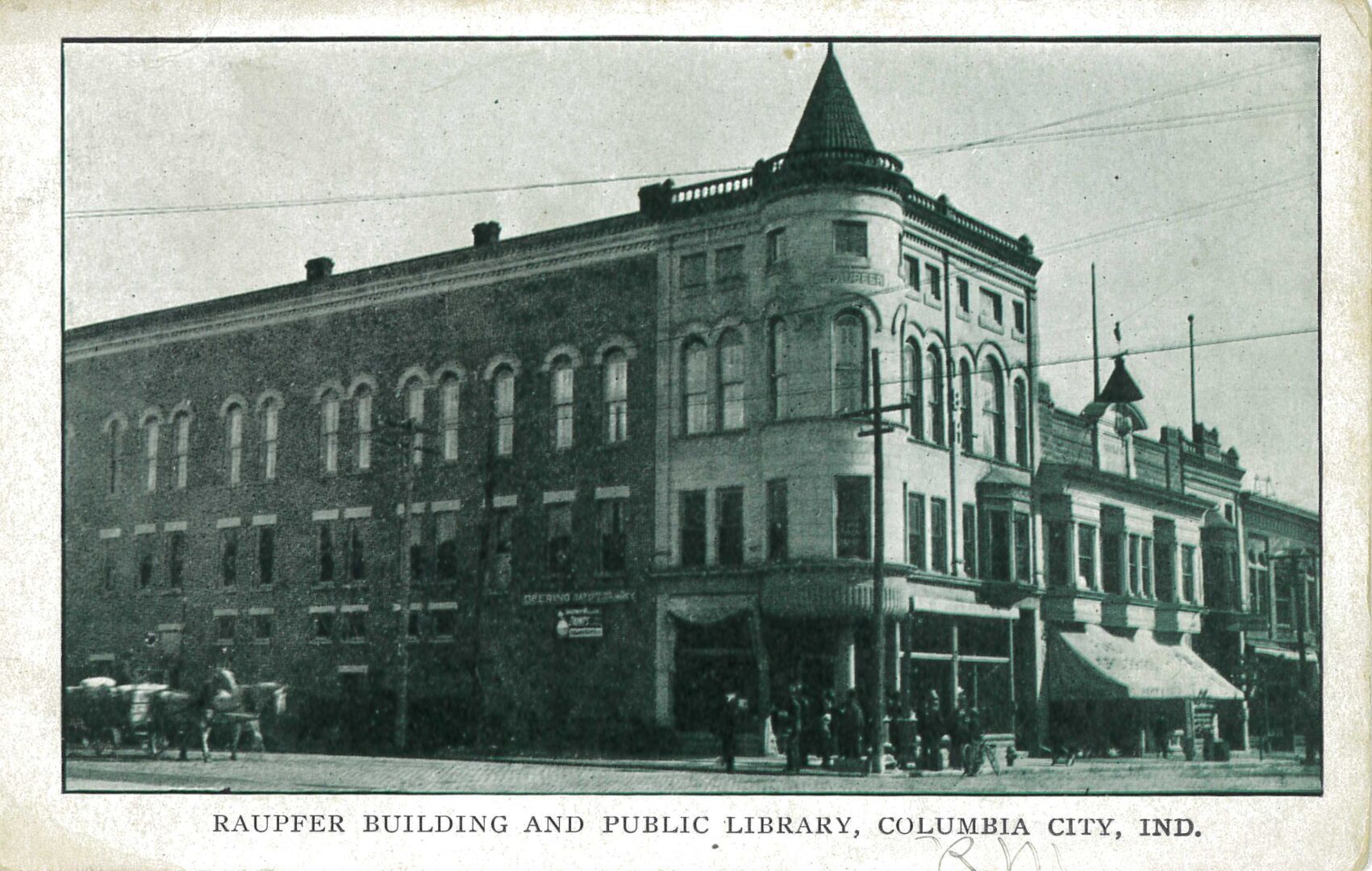
The History that Made Us
Did you know that the building at 232 West Van Buren Street was once the home of the first library in this city?
The People’s Free Library was opened to the public on the second floor July of 1901. The original idea for it came from Leigh S.J. Hunt, who became a prominent businessman. He shared a vision for a library accessible to the community with his friends, attorneys William F. McNagny and Thomas R. Marshall.
The library occupied four rooms and consisted of 3,000 volumes. Circulation in that first year was 29,675. It was supported by Hunt for some years, but illness and other issues forced him to discontinue. Then in 1911, the library became tax supported, and would stay in this location for a few more years. A land and $25,000 donation by Simon Peabody allowed the library to expand, and it moved to its second home in 1919.
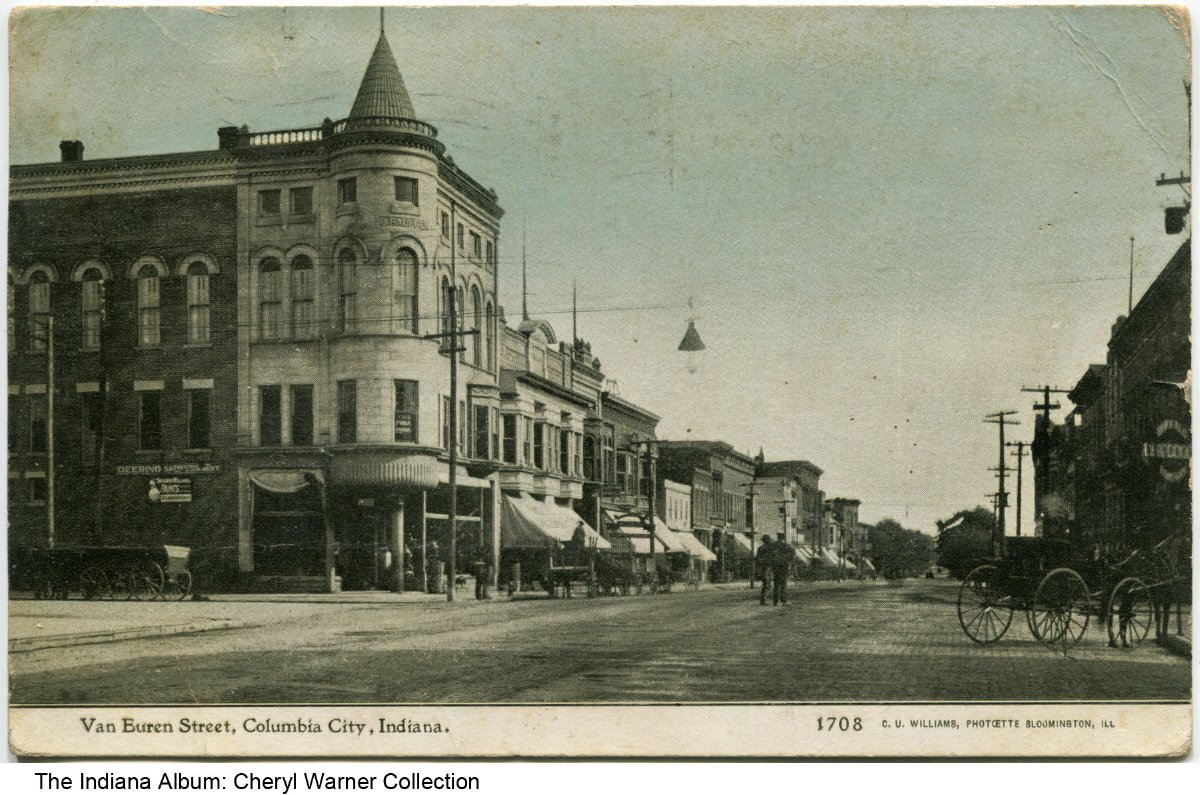
The Raupfer building gets its name from the man who built it – Benjamin Raupfer. He was born in Baden, Germany in 1838. In 1865, he embarked for America, first landing in New York and very soon after making his way to Columbia City. Raupfer first operated a saloon in the city until 1879 when he partnered with Frederick Walter to purchase the Eagle Brewery, which was renamed the Walter-Raupfer Brewery.
Raupfer was a rather industrious businessman. Not only did he have the brewery, but he owned several properties and had interests in multiple businesses in the city. He also owned stock in the Harper Buggy Company and held several positions in local office. In September of 1899, Raupfer and R.J. Jontz bought the stock of the G.W. North hardware. Raupfer soon after bought out his partner, and by 1901 had erected the building at the corner of Van Buren and Line streets to locate a hardware store.
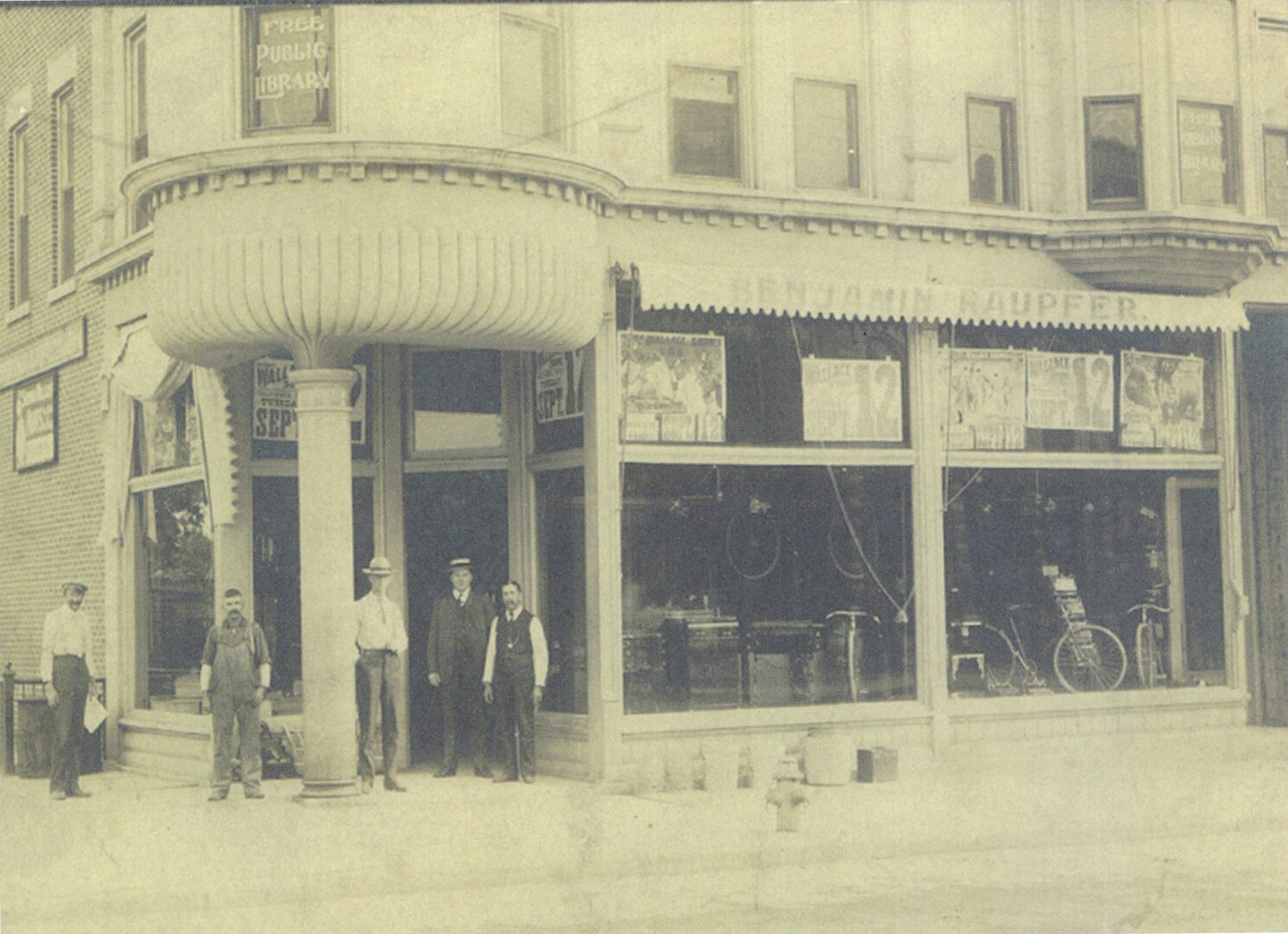
With the hardware store on the first floor, the library on the second, the third floor was then used as a meeting spot for the local Tribe of Ben Hur. This was an insurance group whose rituals and name were inspired by the novel “Ben-Hur: A Tale of the Christ” by Lee Wallace.
Benjamin Raupfer retired in 1912 when he turned over his business interests to his sons. Their father would pass away not long after on June 18, 1914. At his death, his estate was said to have been valued between $75,000 and $100,000, which was an incredible amount of money for that time. Prior to his death, Raupfer had already sold the hardware store to Rossman and Wunderlich, who operated it until 1924 when Raupfer’s sons returned ownership to the family.
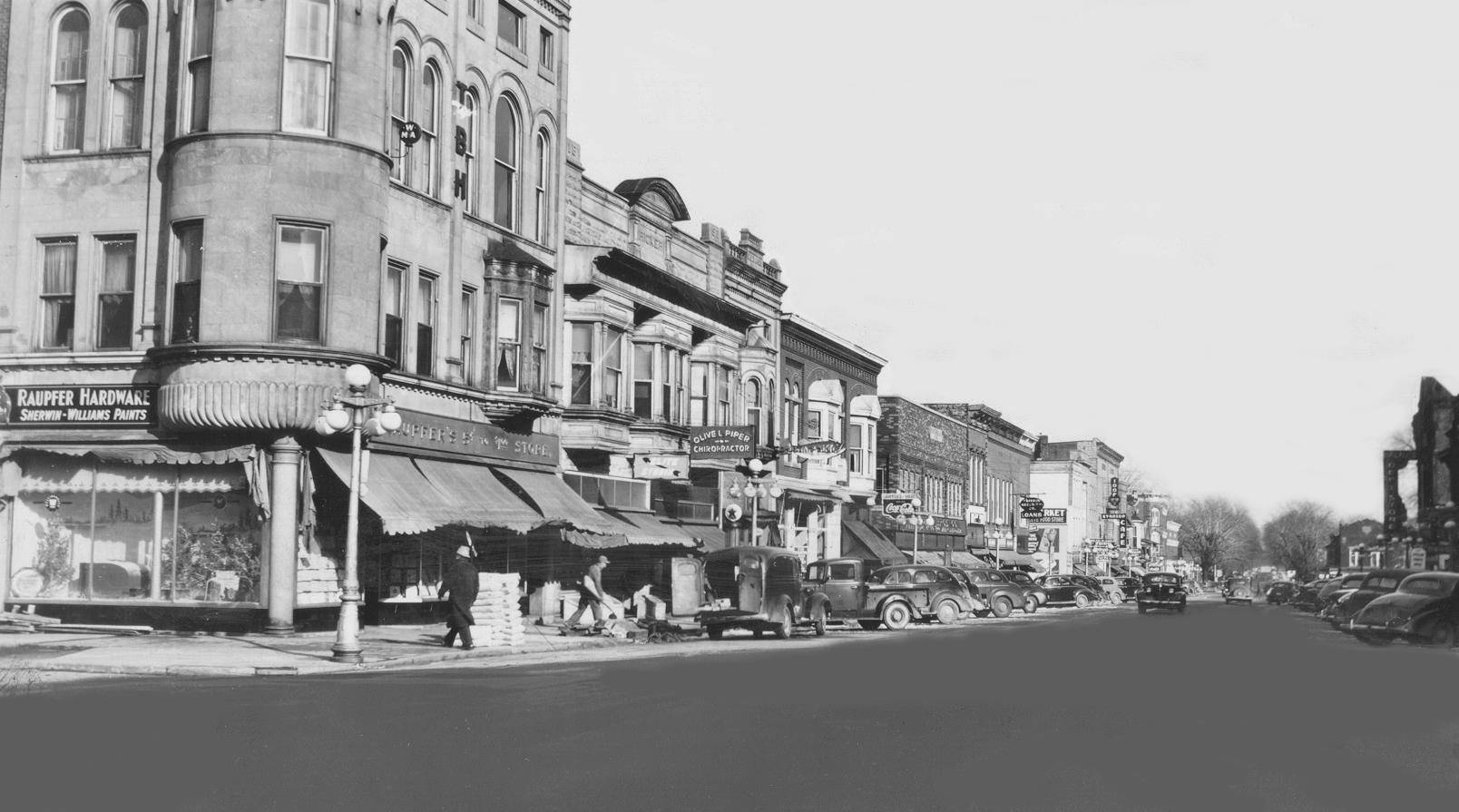
Raupfer Hardware would continue to operate out of this building for numerous years. In the early 1930s, William Raupfer (one of Benjamin’s sons) expanded its offerings to include a 5 and 10 cent to one dollar variety store. This hardware remained a staple of the community for some-30 more years. Then, in 1966 it was reported operations of the hardware store would cease. The variety store continued for a time.
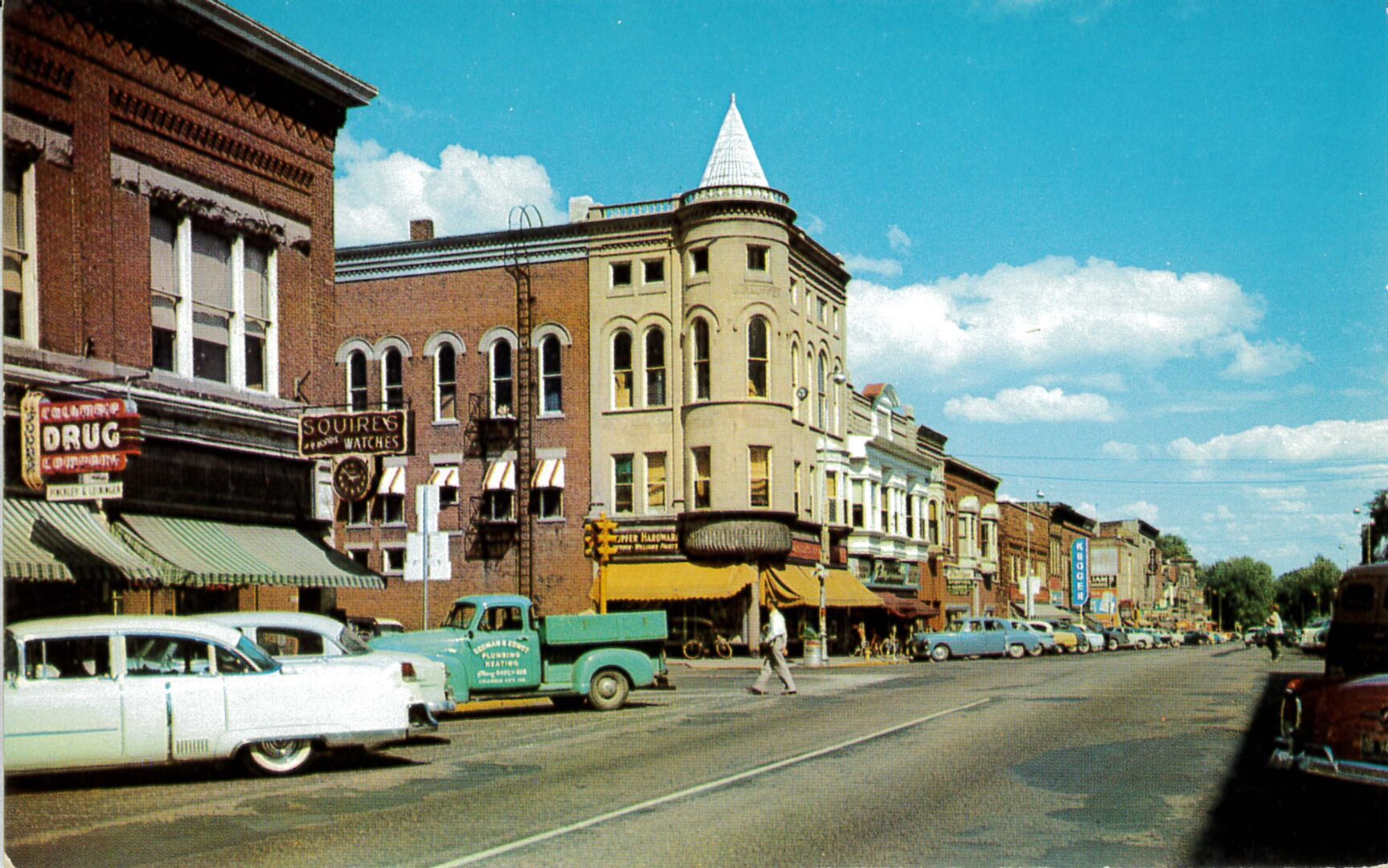
In the late 1960s it became to home of Ball Furniture, where it stayed for several years, along with a gift shop. In the 1980s, Ball Furniture would move to its home on Van Buren Street, but Our Compliments Gift Shop would continue to operate here until the early 2000s. Today, the Raupfer building is home to several businesses and offices including Miracle Ear, Gates Land Title and others.
Thank you to the Whitley County Historical Museum for sharing photos from their collection and for their outstanding research and writing of the article.
Where are We: Architectural History
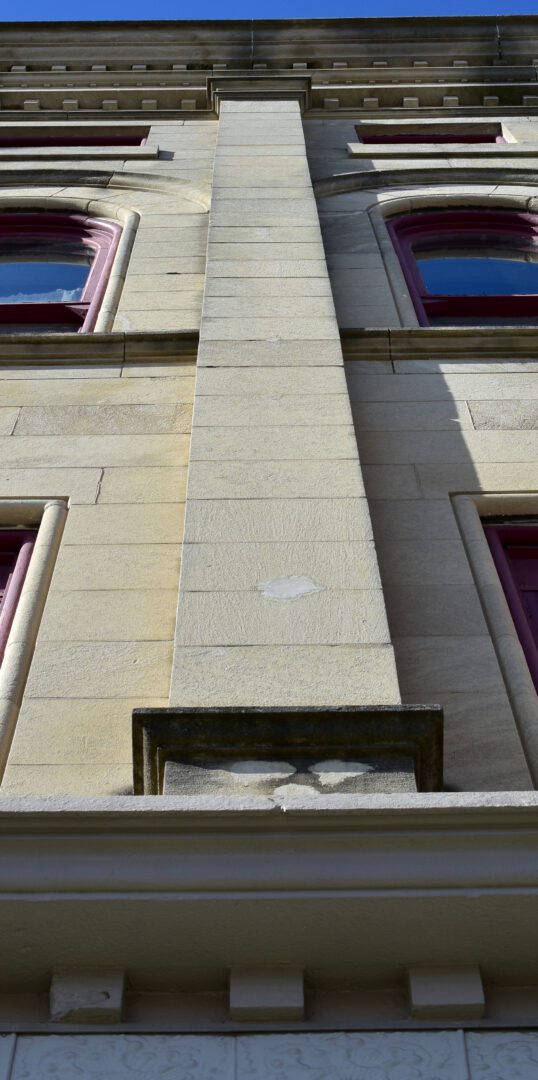
The Raupfer Building is located on the northeast corner of Van Buren and Line Streets. The square block decorations are called dentils and are often seen as part of a cornice detail. This particular building, though, has three rows of dentils, with two as part of the cornice and a third on the band above the first floor. Dentils are simple and fairly inexpensive ornaments, and so are found throughout many historic architectural styles. Unlike some more fanciful decorative components, they still adorn modern buildings, especially as residential trimwork. And, if dentils happen to remind you of teeth, you’d be right—both “dentil” and “dental” come from the same Latin root word dens, meaning “tooth”.
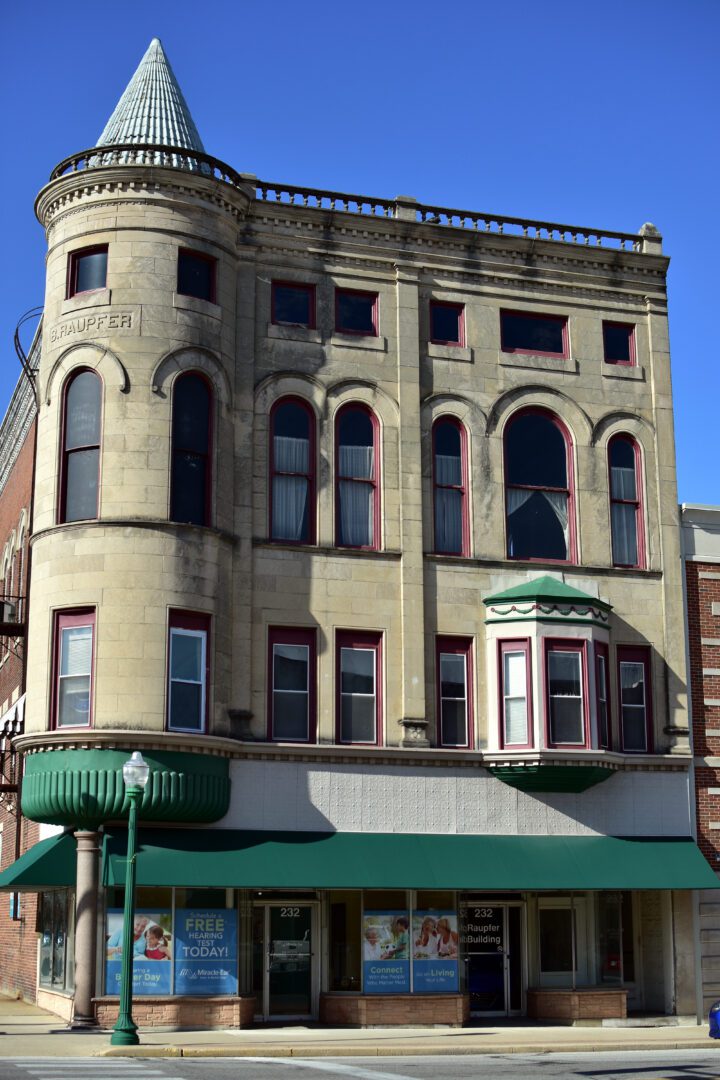
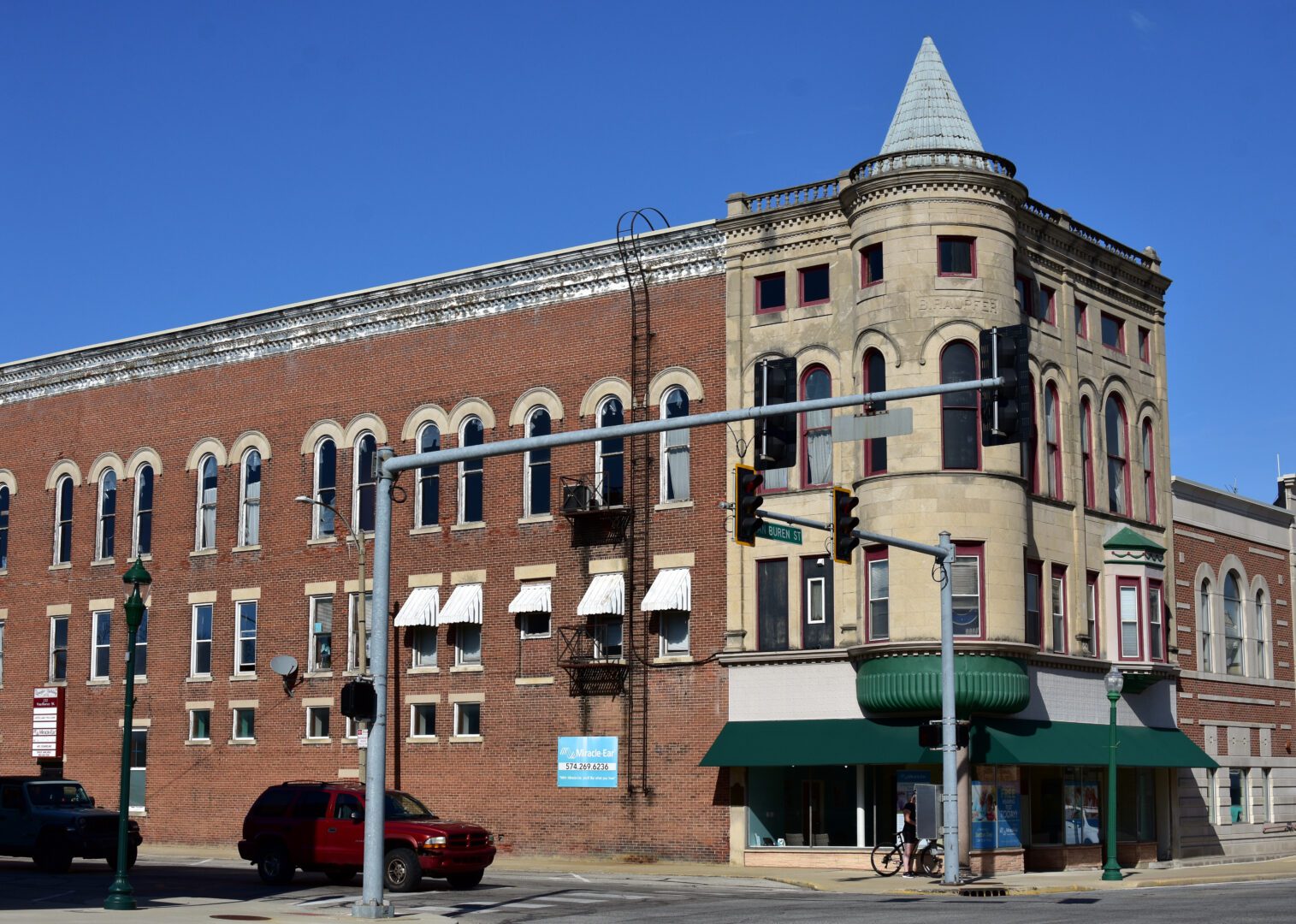
Thank you to Nathan Bilger for providing the recent photos and valuable insights into the architectural history.
